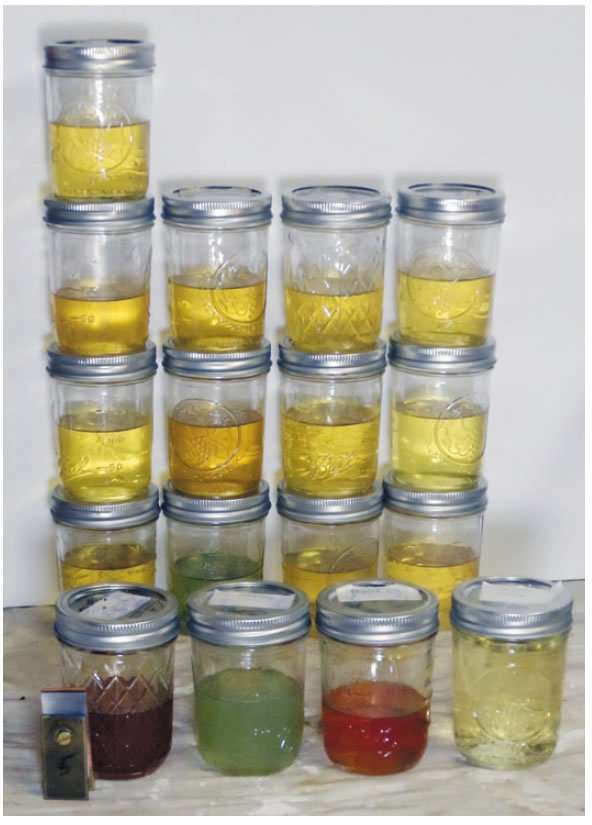
Sometimes it is not what has been added to your fuel that matters, but what is missing. The most obvious difference between gasoline and diesel during our vented, fuel-aging tests was that gasoline samples evaporated and required replenishment at the mid-way point; diesel samples did not. Studies by BoatUS and the U.S. Environmental Protection Agency (EPA) have shown that anywhere between 5 and 20 percent of the contents of a portable or installed polyethylene gas tank can vanish in one year through evaporation and permeation. The remaining fuel is lower in octane, contains fewer of the volatiles that are so essential for easy starting, and has reduced solvency for gum and varnish. It often looks perfectly good-most of our samples did-but it is perfectly rotten and potentially harmful as fuel.
There are several things you can do to ensure that fuel doesn’t go bad during periods of long-term storage.
Reduce permeation: New EPA requirements for low-permeation jerry cans, plastic tanks, and hoses are a blessing. The loss of vital volatile material is reduced, and odors are reduced. However, our experience with the new jerry cans and portable tanks has been disappointing. Most of the designs weve tried have serious flaws; we can only hope the market place will sort that out. Metal tanks have zero permeation.
Store in a cool place: Keep jerry cans out of the sun whenever possible.
Vent filters: The EPA mandated carbon filters on new boats, and aftermarket silica-gel filters reduce water absorption and reduce tank-breathing losses. Over their typical 10-year life, these filters can pay for themselves in saved fuel alone before factoring in reduced engine problems caused by corrosion and varnish. (Depending on the boat, you can expect to save 1 to 3 gallons per year.) (See PS January 2013 and PS January 2014.)
Keep the tank full: A full tank does not breath, and fresh fuel renews the volatile content.
Keep the vent closed when not in use (dinghy engines only): Water absorption and evaporation affect small tanks more quickly.
Run the engine often: The silence of wind power is nice, but gas does not keep.



































